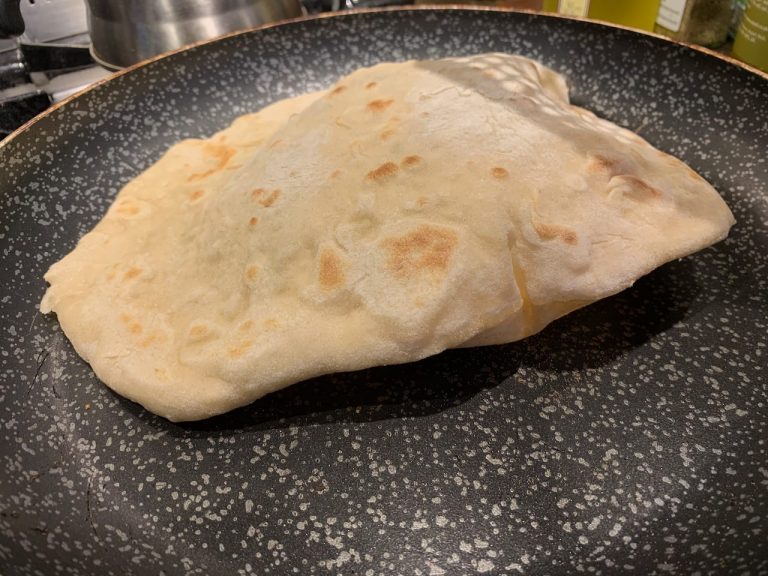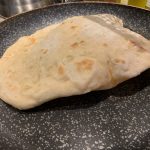Make your own plant based Indian flatbreads at home and you’ll never go back to buying them. Delicious eaten warm, these naans are ideal served with your favourite curry.
The only difference between a naan and a flatbread is the addition of plain yoghurt, which makes the final bread inside silky soft.
Begin by mixing a sachet of dried yeast with 125ml of lukewarm water and set to one side to activate
Put 300gm of plain flour into a large bowl. Make a well in the middle.
Put in the well, 150 gm of plant based plain yoghurt and pour in the activated yeast water.
using a wooden spoon bring together the mixture into a dough, if its very wet add a spoonful of flour and mix, if its too dry add a tablespoon of luke warm water. and mix. The dough should be soft but not wet/sticky.
When it’s brought together into a dough, turn out onto a floured work surface and knead for 10 mins or until the dough is elastic but still soft.
Place back in the bowl and cover for about 40 mins or until it’s doubled in size (sometimes longer depending on the yeast)
Divide the dough into balls about the size of a large egg and roll them all out into teardrop shapes (the traditional naan bread shape), no thicker than 5mm.
Put on a dry frying pan to heat. When the pan is very hot, carefully lay the naan bread into it. Let it dry fry on the first side for about 1 min, then turn over and cook on the other side and puff up for another 3-4 mins and then turn over to the first side for another couple of mins or until cooked through and charred in patches.
At this point I place the naan bread in a teacloth to keep warm in a very low oven while I cook the rest, adding the naan to the pile as I cook them and keeping them wrapped.
Some recipes suggest brushing each naan with melted butter when placing them in the teacloth, but I’ve found they can become very greasy, I leave mine untouched.
Optional extras to enhance the naans is to add finely chopped coriander and crush garlic into the dough, or a tablespoon of black roasted sesame seeds, just before kneading.

ingredients 
mix the yeast with lukewarm water 
mix the flour , yoghurt and yeast water 
bring together into a dough and knead for several mins 
cover and rest for 40 mins 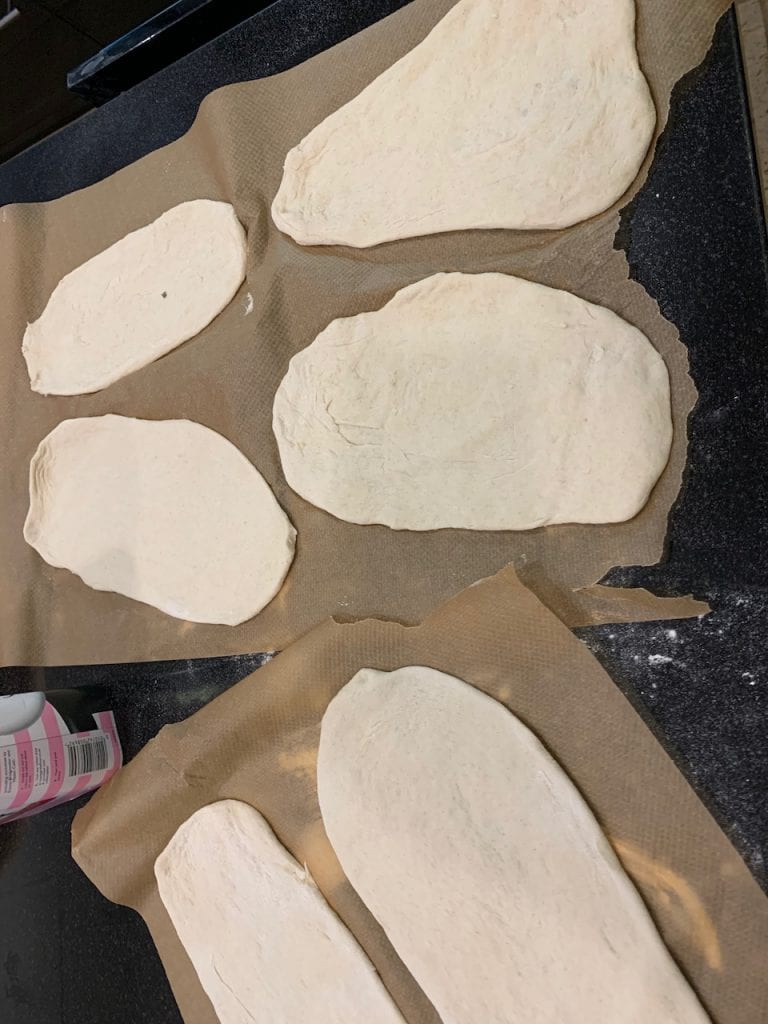
break into small balls and shape roll out into naans 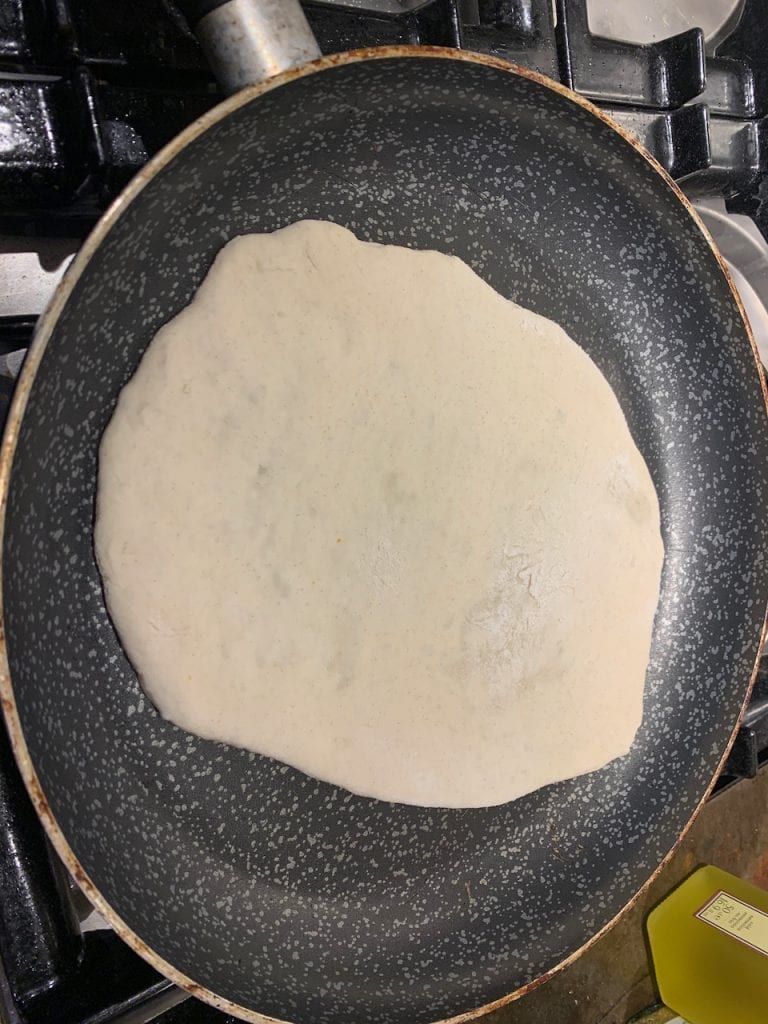
in a dry pan cook several mins on both sides 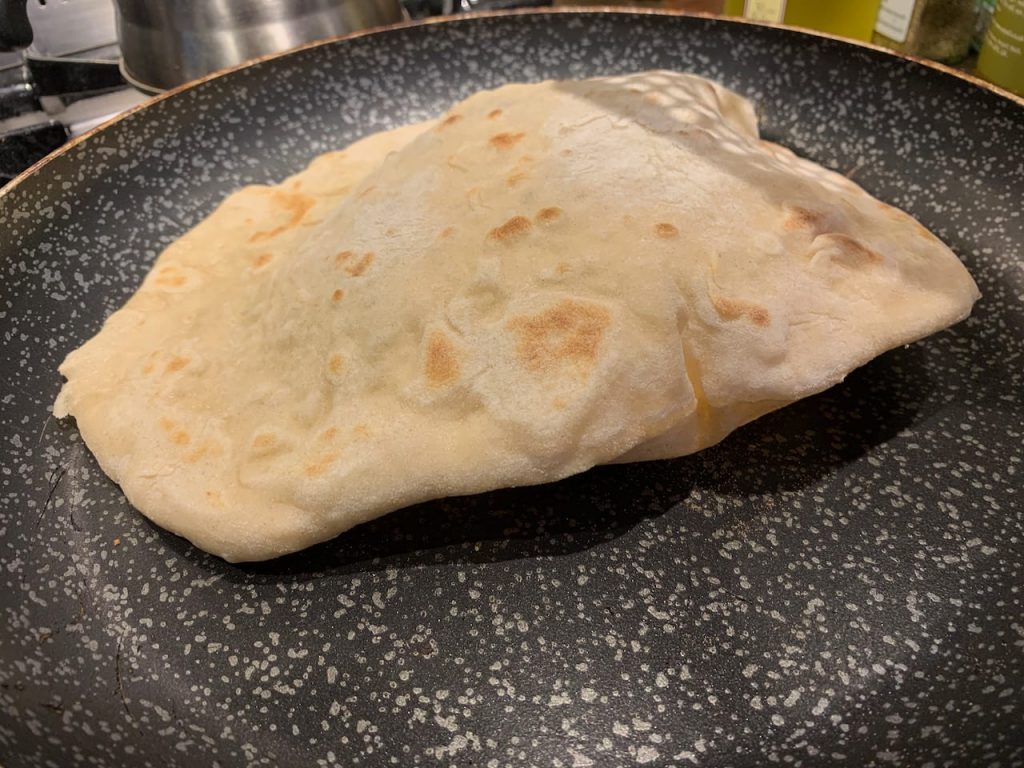
sometimes they balloon and this is good 
wrap in teacloth and cook the rest. 
fold and cover
Naan Bread
Equipment
Ingredients
- 300 g plain flour
- 125 ml lukewarm water
- 7 gm dried yeast one sachet
- 150 ml plain plant based yoghurt
Optional
- 1 tbsp black roasted sesame seeds
- 3 tbsp finely chopped coriander
- 2 cloves finely chopped garlic
Method
- Begin by mixing a sachet of dried yeast with 125ml of lukewarm water and set to one side to activate
- Put 300gm of plain flour into a large bowl. Make a well in the middle.
- Put in the well, 150 gm of plant based plain yoghurt and pour in the activated yeast water.using a wooden spoon bring together the mixture into a dough, if its very wet add a spoonful of flour and mix, if it's too dry add a tablespoon of luke warm water. and mix. The dough should be soft but not wet/sticky.When it's brought together into a dough, turn out onto a floured work surface and knead for 10 mins or until the dough is elastic but still soft.
- Place back in the bowl and cover for about 40 mins or until it's doubled in size (sometimes longer depending on the yeast)
- Divide the dough into balls about the size of a large egg and roll them all out into teardrop shapes (the traditional naan bread shape), no thicker than 5mm.
- Put on a dry frying pan to heat. When the pan is very hot, carefully lay the naan bread into it. Let it dry fry on the first side for about 1 min, then turn over and cook on the other side and puff up for another 3-4 mins and then turn over to the first side for another couple of mins or until cooked through and charred in patches.
- At this point I place the naan bread in a teacloth to keep warm in a very low oven while I cook the rest, adding the naan to the pile as I cook them and keeping them wrapped.
- Some recipes suggest brushing each naan with melted (plant based) butter when placing them in the teacloth, but I've found they can become very greasy, I leave mine untouched.
- Optional extras to enhance the naans is to add finely chopped coriander and crush garlic into the dough, or a tablespoon of black roasted sesame seeds, just before kneading.
Nutrition
(All nutritional information is based on third-party calculations and should be considered estimates. Actual nutritional content will vary with brands used, measuring methods, portion sizes and more).

